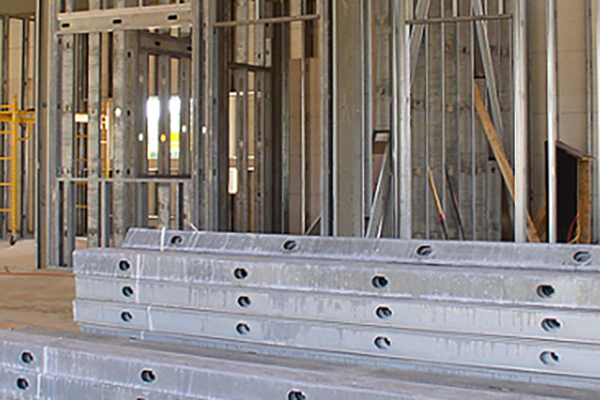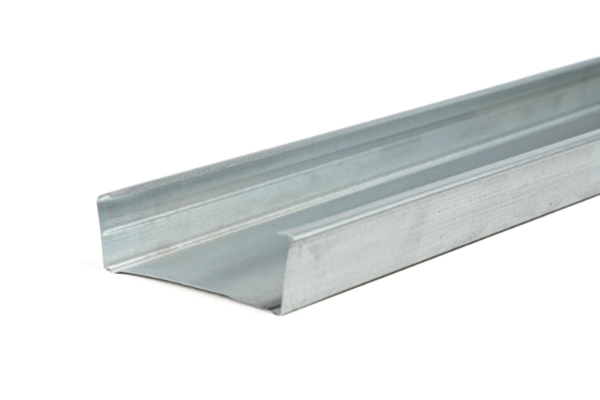When framing a wall—whether for a home, office, or commercial space—one of the most common questions builders and DIY enthusiasts ask is: “Are metal studs 16 or 24 on center?” The answer depends on the type of wall being built, the load requirements, and the specific design standards of the project. Both 16 inches on center (OC) and 24 inches on center are standard spacing measurements in construction, but each has its own purpose and benefits. Understanding when and why to use each spacing is key to achieving strong, efficient, and cost-effective framing.

Understanding Metal Studs
Metal studs are steel framing components used in place of traditional wooden studs. They are popular for their strength, durability, resistance to rot and termites, and their ability to maintain straightness over time. Metal studs are widely used in both residential and commercial construction, especially for interior partition walls and non-load-bearing structures.
Like wood studs, metal studs are installed at regular intervals measured “on center” (OC)—meaning the distance from the center of one stud to the center of the next. This spacing ensures uniformity, proper load distribution, and alignment with common building materials such as drywall sheets, which are typically 4 feet wide.
16 Inches on Center: The Standard for Strength
The 16-inch on center spacing is the most common and traditional layout in wall framing. Here’s why it’s often preferred:
- Stronger Wall Structure
With more studs per wall section, the structure becomes stiffer and can better support heavier loads—whether that’s shelving, cabinets, or wall-mounted fixtures. - Better Support for Drywall
Drywall sheets are designed to align perfectly with studs spaced 16 inches apart, reducing the risk of sagging or cracks between seams. - Ideal for High-Impact Areas
In areas where walls are likely to bear weight or take impact—such as kitchens, bathrooms, or load-bearing partitions—16-inch spacing ensures long-term stability. - Preferred for Taller Walls
For walls exceeding 10 feet in height, closer stud spacing helps prevent flexing and keeps the wall rigid.
However, using studs at 16 inches on center means more material and higher costs, since you’ll need roughly one extra stud for every 8 feet of wall compared to 24-inch spacing.

24 Inches on Center: The Cost-Effective Option
The 24-inch on center spacing is commonly used for non-load-bearing or light-duty interior partitions. While it slightly reduces structural rigidity, it offers several practical advantages:
- Material and Labor Savings
Fewer studs mean lower material costs and less time spent cutting, placing, and fastening. This makes 24-inch spacing more economical for large commercial interiors or temporary structures. - Lighter Wall Assemblies
Using fewer studs also reduces the overall weight of the wall, which can be useful in multi-story buildings where minimizing structural load is important. - Energy Efficiency
With fewer metal studs, there are fewer thermal bridges—points where heat can transfer through the metal. This can slightly improve the wall’s insulation performance in conditioned spaces.
The main drawback of 24-inch spacing is that the wall may feel less solid, and drywall may flex more between studs. This spacing is best suited for walls that don’t carry significant loads and won’t be subjected to frequent impact or heavy attachments.
Which Spacing Should You Use?
Choosing between 16-inch and 24-inch on center spacing depends on your project’s needs:
- Load-bearing walls: Always use 16 inches on center for maximum stability and strength.
- Non-load-bearing interior walls: 24 inches on center is acceptable, provided the wall height doesn’t exceed 10 feet and you use thicker drywall (⅝ inch) for added stiffness.
- Commercial spaces: Architects often specify 24-inch on center spacing for partitions to reduce cost, especially when structural support comes from other framing elements.
- Residential builds: 16 inches on center remains the standard due to its compatibility with most materials and building codes.
It’s also important to consult local building codes before framing, as they may specify minimum stud spacing for certain applications or materials.
Conclusion
So, are metal studs 16 or 24 on center? The answer is both—depending on your wall’s purpose. For strength, load-bearing capacity, and durability, go with 16-inch spacing. For cost efficiency and lightweight partitions, 24-inch spacing can be perfectly adequate.
The key is understanding the demands of your specific project. Whether you’re framing a simple office divider or building a structural wall, proper spacing ensures the balance between strength, efficiency, and performance—helping your metal-stud construction stand strong for years to come.
Post time: Oct-31-2025



